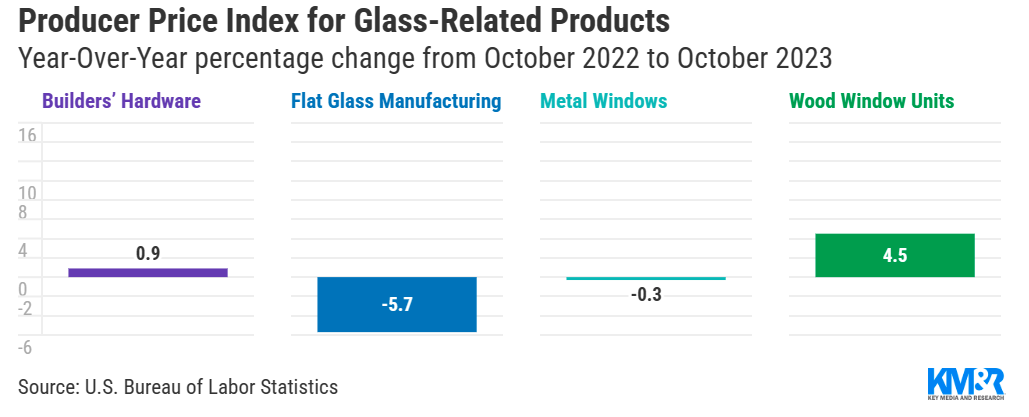U.S. glass and glass products manufacturing prices index fell in October 2023.

The U.S. Department of Labor Statistics reported that the U.S. Producer Price Index (PPI) fell 0.5% in October, down from a 0.4% increase in September. Department officials said this was the largest drop since April 2020. Year-on-year, PP (which measures inflation before consumers spend) rose 1.3% from October 2022, down from 2.2% in September.
Prices in the glass and glass products manufacturing industry also fell, down 0.1%. This follows a 0.6% gain in September. October was the third month in the last five months that glass products and manufacturing prices have fallen. The manufacturing price of glass and glass products is still 5.2% higher than that in October 2022.
Figure 1 The American glass and glass material prices index
Flat Glass – Flat glass prices rose 0.1% in October. This follows a 0.4% increase in September. Prices for flat glass fell 0.7% in June and 0.9% in July. Compared with October 2022, the price of flat glass increased by 1.9% year-on-year.
Flat glass manufacturing - Flat glass manufacturing prices increased month-on-month from September to October, with an increase of 0.3%. The increase ended three consecutive months of falling house prices. However, compared with the same period last year, prices fell by 5.7%.
Metal structural parts - The price of metal structural parts rose again from September to October, up 0.8%. This is the fourth consecutive month that the price of gold metal structural products has increased. Compared with October 2022, product prices fell by 0.7% year-on-year.
Decorative and Architectural Metal Products – Prices for decorative and architectural metal products remained unchanged in October. This followed a revised 0.8% gain in September and ended three consecutive months of price declines. Prices for decorative and architectural metal products fell 1.5% year-on-year.
Metal Windows – Metal window prices remained unchanged for the third consecutive month. Prices in this sector last fell in July 2023 (-0.2%). Metal window prices fell 0.3% year-on-year.
Metal Doors, Frames – Prices for metal doors and frames were flat in October after rising 0.6% in September and 0.4% in August. Compared with October 2022, the price of metal doors and frames increased by 2.4% year-on-year.Architectural Hardware – Prices for architectural hardware, including door and window hardware, remained unchanged in September. This is the sixth consecutive month that the industry's PPL has remained flat. Builders' hardware prices rose 0.9% year over year.
Disclaimer: The above views do not represent the position of LIJIANG Glass, and the copyright belongs to the original author and source. The content of News is the author's personal opinion, and it does not mean that LIJIANG Glass agrees with his opinion and is responsible for its authenticity. LIJIANG Glass only provides references and does not constitute investment and application advice.



